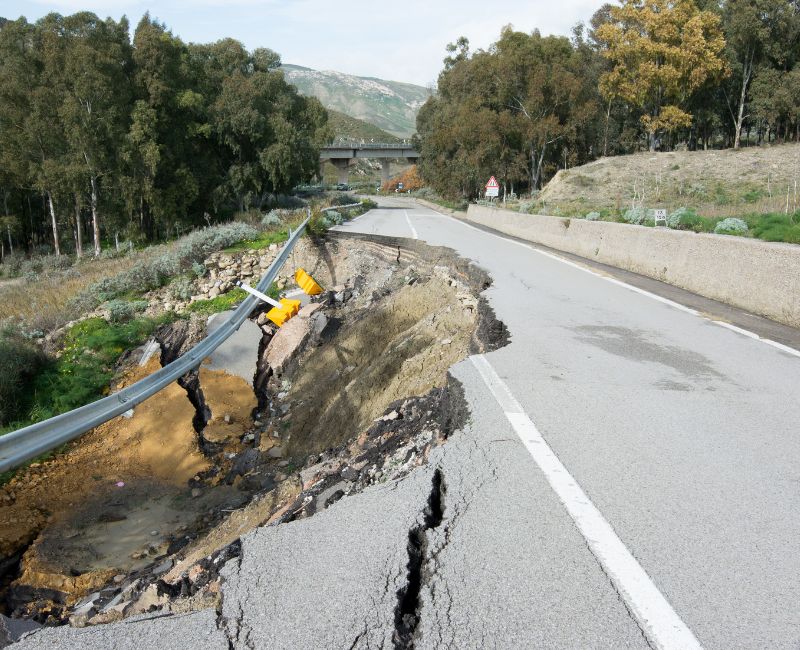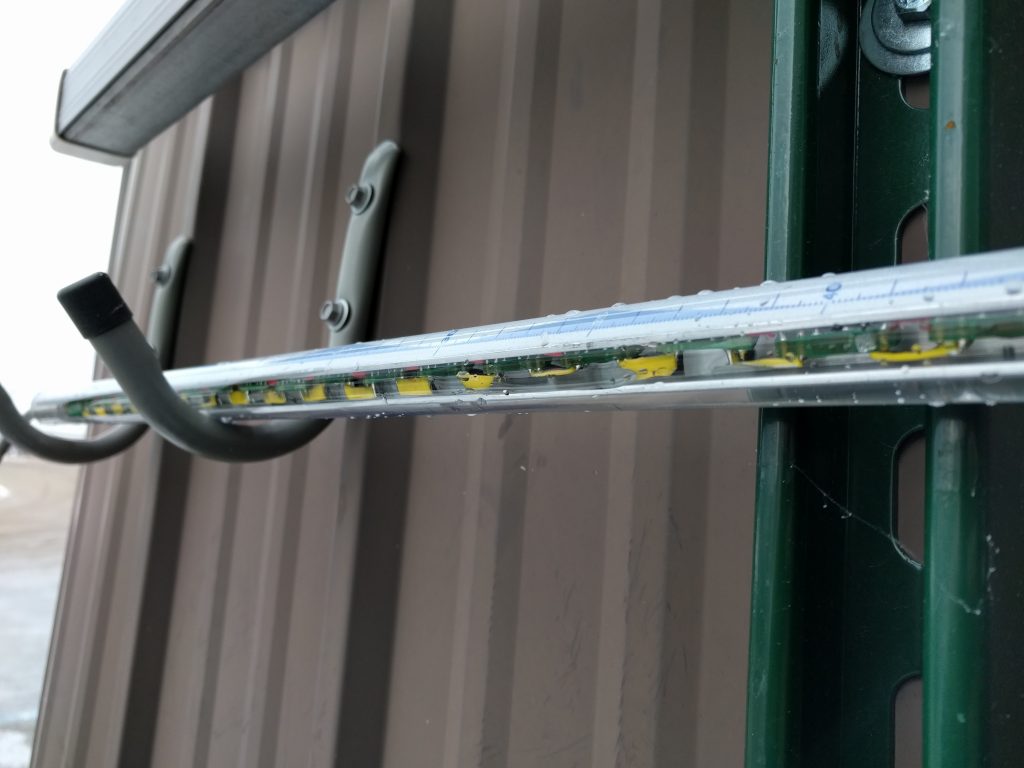Every winter, vast stretches of ground freeze across regions with seasonal climates, only to thaw as temperatures rise in the spring. This cyclical freezing and thawing process not only affects the stability of the ground but also poses significant challenges for infrastructure, particularly highways. Frozen ground can heave, depending on the soil conditions. As the ground thaws, movements occur, increasing the risk of landslides and other hazards. In response, highway authorities implement measures such as load bands to manage these risks, often relying on historical data. However, with the advent of digital temperature probes, there’s an opportunity to revolutionize winter highway management by providing accurate, real-time temperature data that offers a deeper understanding of road conditions.
The Challenge of Seasonal Ground Freezing
The impacts of seasonal ground freezing on road safety are profound. Each year, a significant portion of weather-related vehicle crashes occur on snowy, slushy, or icy pavement, with a notable percentage taking place during snowfall or sleet. These accidents result in numerous casualties and injuries, underscoring the importance of effective winter maintenance strategies for ensuring safe road conditions. (US DOT FHWA, 2023).
Managing winter highways presents myriad challenges, especially in regions where the ground experiences seasonal freezing and thawing. A primary concern is the risk of ground movement as the soil thaws, leading to hazards such as landslides, pavement heaving, and subsidence. These hazards pose significant risks to motorists and infrastructure alike. Additionally, fluctuating temperatures during the thawing process contribute to unpredictable road conditions, making it difficult for highway authorities to anticipate and effectively respond to potential hazards.

Historic Data vs. Real-Time Monitoring
Traditionally, highway authorities have relied on historic data and manual observations to assess road conditions during the thawing period (BC Ministry of Transport and Infrastructure, n.d.). While historic data can provide valuable insights into past trends and patterns, it lacks the immediacy and accuracy required for proactive decision-making in real-time scenarios. Changing climate conditions also mean that historical data may not be as representative of today’s realities. Without real-time monitoring capabilities, highway authorities may struggle to identify emerging hazards or adjust maintenance strategies promptly.
Landslides and Seasonal Movements

In addition to the challenges posed by ground freezing and thawing, the spring thaw period also can see an increase in the activity of creep landslides. These findings are corroborated by a recent study on seasonal landslide activity in the Pacific Northwest (PNW), which highlights the distinct seasonal pattern of landslides, including creep landslides, and their correlation with precipitation (Luna and Korup, 2022). The study reveals that the onset of the landslide season typically occurs in November, the start of the rainy season in this region, followed by peaks in landslide probability in January and intensity in February, as the spring starts to approach. During this period, spring thawing and increased moisture content in the soil can contribute to the acceleration of creep landslides. The combination of thawing ground and increased moisture saturation can weaken the slope’s stability, leading to accelerated movement of creep landslides and posing additional risks to infrastructure and public safety. By integrating digital temperature probes into their monitoring efforts, highway authorities can gain valuable insights into ground temperature fluctuations and anticipate potential landslide hazards, allowing for more proactive and effective mitigation strategies during the critical spring thaw period.
Digital Temperature Probes: A Game-Changer in Winter Highway Management
Digital temperature probes revolutionize winter highway management, addressing the limitations of traditional methods with their unparalleled accuracy and continuous monitoring capabilities. These sophisticated systems, such as beadedstream’s rigid temperature probes, offer quick installation and feature multipoint sensors with tight spacing, providing precise temperature data from the surface down to depths of up to 6ft (1.8m). With sensor spacing as close as every 2.5cm (1 inch), beadedstream’s probes ensure comprehensive monitoring of road temperature profiles, allowing highway authorities to anticipate hazards effectively.

One of the standout advantages of digital temperature cables lies in their ability to deliver uninterrupted data streams throughout the thawing period. Unlike periodic measurements, these probes offer real-time insights into temperature fluctuations, empowering authorities to make proactive decisions regarding winter maintenance activities. Whether it’s optimizing salt application, implementing anti-icing treatments, or determining road closures, beadedstream’s digital temperature cables, coupled with air temperature sensors, provide invaluable data for informed decision-making. By seamlessly connecting to data loggers with telemetry capabilities, these systems enable authorities to stay ahead of evolving road conditions and ensure the safety and efficiency of winter highway operations. They can also be integrated into existing Road Weather Information Systems (RWIS) to provide below surface data to complement the other parameters being monitored (ADOT&PF, n.d.).
Real-World Impact of Temperature Probes
The use of Temperature Data Probes by the Alaska Department of Transportation and Public Facilities (ADOT&PF) exemplifies the tangible benefits of real-time temperature monitoring in winter highway management. With TDPs providing critical temperature data up to six feet below the pavement surface, ADOT&PF has achieved notable success in issuing fact-based weight restriction notices during the spring thaw period. This proactive approach has resulted in minimized pavement damage, reduced road maintenance costs, and optimized commercial trucking operations, ultimately enhancing road safety and preserving infrastructure integrity.
ADOT&PF’s Temperature Data Probe Program showcases the transformative potential of leveraging real-time temperature data in winter highway management. By integrating TDPs into their decision-making process, ADOT&PF has effectively mitigated the impacts of seasonal ground freezing and thawing, ensuring the resilience and reliability of Alaska’s highway network. Through strategic deployment and continuous monitoring, TDPs have emerged as invaluable tools for optimizing road maintenance practices and enhancing overall road safety during challenging winter conditions (US DOT FHWA, 2020).
Conclusion
As climate change continues to exert its influence on seasonal weather patterns, the need for robust monitoring solutions becomes increasingly evident. Digital temperature probes offer a proactive approach to mitigating the impacts of climate change on winter highway management, enabling authorities to adapt swiftly to evolving conditions and ensure the safety and reliability of road networks.
For highway authorities seeking to enhance their winter maintenance strategies and leverage the benefits of digital temperature probes, beadedstream offers solutions tailored to their needs. Explore our rigid temperature probe and discover how it can enhance your approach to winter highway management. For inquiries or further information about our solutions, reach us at contact@beadedstream.com.








